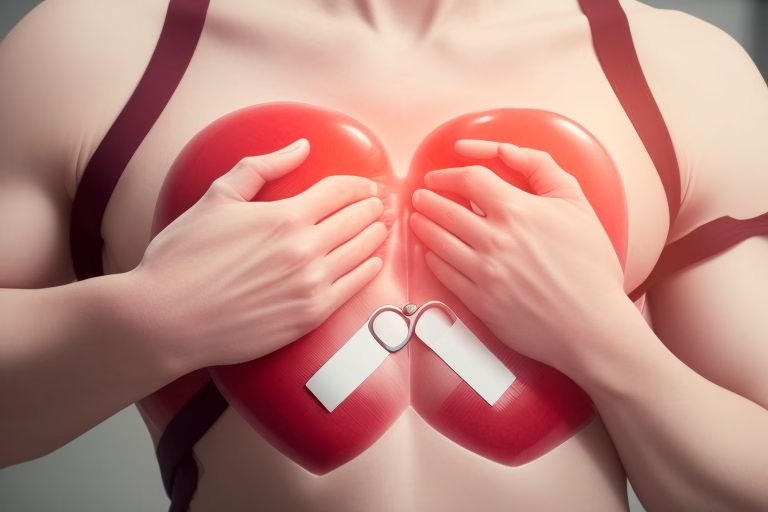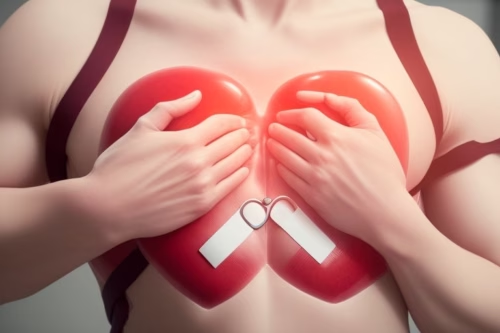
Have you ever wondered what it takes to truly overcome the challenges of cardiac arrest disease and live a vibrant, fulfilling life? In this ultimate guide, we’ll dive deep into everything you need to know about cardiac arrest disease, from understanding its causes and symptoms to exploring the latest treatments and lifestyle changes that can make a real difference. Whether you’re a patient, caregiver, or simply someone who cares about heart health, this article is designed to give you practical, easy-to-follow strategies that are both informative and uplifting. We beleive that with the right knowledge and positive mindset, every heart can find hope and healing.
What is Cardiac Arrest Disease?
Cardiac arrest disease is a serious condition that occurs when the heart suddenly stops beating. Unlike a heart attack, which happens when blood flow to the heart muscle is blocked, cardiac arrest is primarily an electrical malfunction that disrupts the heart’s rhythm. This condition is life-threatening and requires immediate medical attention to restore the heart’s normal function. Many people mistakenly confuse cardiac arrest with a heart attack, but they are two distinct medical emergencies.
Cardiac arrest can happen to anyone, even those who seem to be in good health. It is often caused by an underlying heart condition, such as coronary artery disease, or by external factors like trauma. Because of its sudden onset, rapid response is crucial in preventing long-term damage or death. For more detailed clinical information, you can check out Mayo Clinic’s insights on cardiac arrest.

The Science Behind Cardiac Arrest Disease
Understanding the science behind cardiac arrest disease can help us better prepare for prevention and treatment. The heart relies on electrical signals to regulate its beat. When these signals become erratic or completely stop, the heart is unable to pump blood effectively, leading to a cardiac arrest. This disruption can be caused by several factors, including:
- Coronary artery disease: This is one of the most common underlying conditions that can lead to cardiac arrest.
- Cardiomyopathy: A disease of the heart muscle that can alter its structure and function.
- Electrical abnormalities: Conditions such as Long QT syndrome can disturb the heart’s natural rhythm.
- External influences: Trauma, drug overdose, or severe electrolyte imbalances can trigger an arrest.
It’s important to note that while some of these factors are out of our control, many can be managed with proper medical care and lifestyle changes. Research continues to evolve in this field, making it an area of active study for cardiologists worldwide. The American Heart Association offers great resources on understanding these mechanisms in more detail American Heart Association – Cardiac Arrest.
Recognizing the Signs and Symptoms
One of the biggest challenges with cardiac arrest disease is that it often strikes without warning. However, there are some signs that might indicate an increased risk of experiencing a cardiac event. While these symptoms do not guarantee that a cardiac arrest will occur, they should be taken seriously:
- Sudden collapse or loss of consciousness: This is the most common indicator.
- Abnormal or no pulse: An absence of a pulse is a clear sign of cardiac arrest.
- Difficulty breathing or gasping: These symptoms can occur before the heart stops.
- Chest pain or discomfort: Although more common in heart attacks, chest discomfort can also precede a cardiac arrest.
Many factors can increase the risk, including advanced age, high blood pressure, high cholesterol, and a family history of heart disease. It’s crucial to seek immediate medical help if you notice any of these signs. For more detailed symptom analysis and emergency response tips, refer to this comprehensive guide by Cleveland Clinic.
Why Early Intervention is a Game-Changer
Time is of the essence when it comes to cardiac arrest disease. Studies have shown that immediate intervention, especially with the use of an Automated External Defibrillator (AED), can significantly improve the chances of survival. Quick action not only saves lives but also reduces the risk of permanent brain damage.
Emergency responders are trained to handle these situations, but having the knowledge and tools at home or in public spaces can be lifesaving. If you witness someone experiencing a cardiac arrest, call emergency services immediately and begin CPR if you are trained. Simple actions can make the difference between life and death.
To understand the importance of early intervention, you might want to read more about emergency cardiovascular care on Red Cross’s Emergency Preparedness.
Lifestyle Changes to Prevent Cardiac Arrest Disease
A proactive approach to health can be your best defense against cardiac arrest disease. Many lifestyle changes can help reduce your risk and improve overall heart health. Here are some key strategies to consider:
1. Eat a Heart-Healthy Diet
Eating a balanced diet is fundamental. Focus on incorporating plenty of fruits, vegetables, whole grains, lean proteins, and healthy fats. Foods rich in omega-3 fatty acids, such as salmon and walnuts, are known to support heart health. Avoiding excessive salt, sugar, and processed foods can help maintain healthy blood pressure levels.
Tip: Try to make small, sustainable changes in your diet rather than drastic overhauls that are hard to maintain long term.
2. Exercise Regularly
Physical activity is one of the most effective ways to improve heart health. Aim for at least 150 minutes of moderate aerobic exercise per week, such as walking, cycling, or swimming. Regular exercise helps control weight, reduce blood pressure, and improve overall cardiovascular function.
Did you know? Even a daily brisk walk can lower your risk of cardiac arrest disease significantly!
3. Quit Smoking and Limit Alcohol Intake
Smoking is a major risk factor for a host of heart-related conditions, including cardiac arrest disease. Quitting smoking can drastically reduce your risk of experiencing a heart crisis. Similarly, excessive alcohol consumption can lead to high blood pressure and other heart problems, so moderation is key.
4. Manage Stress Effectively
Chronic stress can negatively impact your heart health. Techniques such as mindfulness meditation, yoga, and deep breathing exercises can help manage stress levels. Sometimes, even simple hobbies or spending time with loved ones can make a huge difference.
5. Regular Medical Checkups
Regular checkups with your healthcare provider can help detect risk factors early. Routine blood pressure, cholesterol, and blood sugar tests are crucial in monitoring your heart health. Early detection of potential issues allows for timely interventions that can prevent more serious problems later on.
For more practical tips on living a heart-healthy lifestyle, consider reading the Harvard Health Publishing guide on heart disease prevention.
The Role of Genetics in Cardiac Arrest Disease
Genetics plays a significant role in determining an individual’s susceptibility to cardiac arrest disease. If you have a family history of heart disease, your risk may be higher. This does not mean that heart issues are inevitable, but it does emphasize the need for regular health screenings and proactive lifestyle adjustments.
Understanding your genetic predisposition can help you and your doctor develop a personalized plan to manage risk factors. Genetic testing and counseling can provide valuable insights, allowing you to make informed decisions about your health.
Technological Advancements in Treatment
The landscape of cardiac care has been transformed by technological innovations. From wearable defibrillators to sophisticated implantable devices, new technology is saving lives and improving the prognosis for patients with cardiac arrest disease. Here are some of the most promising advancements:
Implantable Cardioverter-Defibrillators (ICDs)
ICDs are devices implanted in patients who are at high risk for cardiac arrest. These devices monitor heart rhythms and deliver an electric shock if a dangerous rhythm is detected, effectively preventing a full-blown cardiac arrest.
Wearable Defibrillators
For patients who are not yet candidates for an ICD, wearable defibrillators offer a non-invasive solution. These devices continuously monitor the heart and can provide immediate treatment if an abnormal rhythm is detected.
Telemedicine and Remote Monitoring
Advances in telemedicine have made it easier for patients to stay connected with their healthcare providers. Remote monitoring devices can track vital signs in real time, allowing doctors to intervene at the earliest signs of trouble.
Research and Innovation
Ongoing research in the field of cardiology is leading to new treatments and prevention strategies. Innovative techniques, such as gene therapy and stem cell research, hold promise for the future treatment of cardiac arrest disease. For the latest updates on cardiac research, check out NIH’s research on heart diseases.
Cardiac Arrest Disease vs. Heart Attack: Know the Difference
It’s important to understand that cardiac arrest disease and a heart attack are not the same thing, even though they are often used interchangeably by the general public. A heart attack occurs when blood flow to the heart is blocked, whereas cardiac arrest is an electrical malfunction that results in the heart suddenly stopping. While a heart attack can lead to cardiac arrest, the treatment and immediate response required for each are very different.
Recognizing the difference between these two conditions can save lives. If you suspect someone is having a heart attack, it is critical to call emergency services immediately. Learn more about the differences and how to respond to each emergency from Johns Hopkins Medicine.
Living with Cardiac Arrest Disease: Stories of Hope and Recovery
While the term cardiac arrest disease may evoke fear and uncertainty, many survivors have shared their inspiring journeys to recovery. These stories highlight that with the right medical care, lifestyle adjustments, and emotional support, it is possible to overcome even the most daunting challenges.
Take, for instance, the story of John, a 55-year-old who experienced a sudden cardiac arrest. After being resuscitated by quick-thinking bystanders, John underwent an ICD implantation and made significant changes to his diet and exercise routine. Despite the odds, his positive outlook and determination helped him regain his quality of life. Such stories are not only inspiring but also serve as a reminder that every second counts when battling cardiac arrest disease.
Another survivor, Maria, shares that while the recovery process was long and challenging, the support from her family and a community of fellow survivors played a pivotal role in her healing. Her journey underscores the importance of not only medical interventions but also the mental and emotional aspects of recovery.
If you want to read more about personal stories and experiences, the British Heart Foundation has a wonderful collection of survivor narratives that offer hope and encouragement.
Practical Steps for a Healthier Heart Today
Taking control of your heart health doesn’t have to be overwhelming. Here are some practical steps that you can implement today to reduce your risk of cardiac arrest disease and improve your overall well-being:
- Schedule a health check-up: Even if you feel fine, getting a professional opinion can reveal hidden risk factors.
- Adopt a balanced diet: Incorporate more fruits, vegetables, and lean proteins into your meals.
- Engage in regular physical activity: Find an exercise routine that you enjoy, whether it’s dancing, cycling, or even gardening.
- Reduce stress: Experiment with relaxation techniques such as meditation, deep breathing, or even spending time in nature.
- Educate yourself: Stay informed about the latest heart health news and research by following reputable sources.
For those looking for more comprehensive guidelines on improving heart health, Harvard Medical School’s health blog offers expert advice and practical tips.
The Importance of Mental and Emotional Wellbeing
It’s often overlooked that mental and emotional wellbeing play a huge role in managing cardiac arrest disease. Stress, anxiety, and depression can all have a negative impact on heart health. It’s important to remember that nurturing your mind is just as important as taking care of your body.
Integrating activities that boost your mood can lead to tangible improvements in heart function. Whether it’s listening to your favourite music, spending time with friends and family, or engaging in a hobby you love, every little bit helps. Some studies even suggest that laughter and positive social interactions can lower blood pressure and improve cardiovascular health.
If you’re interested in learning more about the connection between mental health and heart health, consider checking out this insightful article from Psychology Today.
Overcoming Common Barriers to Heart Health
While the information and strategies above are invaluable, many people face obstacles that prevent them from making necessary changes. Some of the most common barriers include:
- Lack of time: In our busy lives, finding time to exercise and prepare healthy meals can be challenging.
- Financial constraints: Healthy foods and regular medical checkups can be expensive, making it hard for some to access necessary care.
- Limited access to healthcare: Not everyone lives in an area with ready access to quality healthcare services.
- Emotional barriers: Fear and anxiety about medical procedures can also hold people back from seeking help.
Addressing these barriers often requires a community effort. Local support groups, community centers, and even online forums can provide guidance and resources. Sometimes, small changes, like walking during lunch breaks or choosing one healthy meal per day, can pave the way for more significant improvements.
Innovative Prevention Programs and Community Initiatives
Around the world, innovative prevention programs are making a real difference in reducing the impact of cardiac arrest disease. These programs often focus on community education, early detection, and emergency preparedness.
For example, many cities now have public access defibrillators in malls, parks, and other public areas. Training programs for CPR and first aid are being offered at community centers, schools, and workplaces. These initiatives empower everyday citizens to act in emergencies, potentially saving countless lives.
Several non-profit organizations, such as the Sudden Cardiac Arrest Foundation, are dedicated to raising awareness and providing resources for prevention and treatment. By engaging with your local community, you can be a part of the solution and help create a safer, healthier environment for everyone.
Embracing a Future of Hope and Healing
Living with the risk of cardiac arrest disease doesn’t have to be a life sentence of fear and limitation. With the right knowledge, proactive measures, and a positive outlook, it is entirely possible to lead a fulfilling life. Advances in medical technology, improved emergency response protocols, and comprehensive lifestyle strategies all contribute to a future where cardiac emergencies can be effectively managed and even prevented.
Every step you take towards better heart health is a step towards a brighter, healthier future. Remember that even small changes can have a huge impact over time, and you are never too old or too young to make a positive change. Embrace the journey, celebrate every victory, and keep moving forward with hope and determination.
Common Misconceptions and Myths About Cardiac Arrest Disease
There are many myths and misconceptions that surround cardiac arrest disease. Clearing up these misunderstandings can help people take the right actions and seek appropriate care without unnecessary fear or hesitation.
One common myth is that cardiac arrest only happens to the elderly. While age is a factor, younger people can also be affected, especially if there is an underlying genetic condition or lifestyle factor at play. Another misconception is that if you feel fine, you’re not at risk. Cardiac arrest disease can develop silently, which is why regular checkups are so important.
Don’t let misinformation cloud your judgement – educate yourself using credible sources. For example, the Centers for Disease Control and Prevention (CDC) offers reliable information on heart disease and prevention strategies.
Integrating Cardiac Arrest Disease Awareness Into Daily Life
Raising awareness about cardiac arrest disease in your everyday life can have a lasting impact on your community. Whether it’s by sharing information on social media, participating in local health initiatives, or simply starting conversations with friends and family, every bit helps.
- Share your story: Personal experiences can be incredibly powerful. If you or someone you know has overcome cardiac arrest, sharing that journey can inspire others.
- Volunteer: Consider volunteering with organizations dedicated to heart health. Your time and energy can make a real difference in educating others.
- Advocate: Support policies and programs that promote heart health. Whether it’s through local government or community groups, advocacy can lead to better resources and support systems.
By making heart health a priority and engaging in open dialogue about cardiac arrest disease, you help build a community that is informed, proactive, and ready to act in times of need.
Personalizing Your Heart Health Journey
No two hearts are the same, and neither should be your approach to preventing or managing cardiac arrest disease. Personalizing your heart health journey means working closely with healthcare professionals to design a plan that fits your unique needs. This could involve tailoring your exercise routine, dietary choices, and even the timing of your regular medical checkups.
Creating a personalized plan can feel overwhelming at first, but remember that small, manageable changes add up over time. Celebrate your progress, no matter how minor it may seem, and stay motivated by keeping your end goals in sight. Your heart health is a lifelong journey, and every effort you put in is an investment in a healthier, happier future.
Embracing Modern Technology for Daily Monitoring
One of the most exciting developments in the fight against cardiac arrest disease is the integration of modern technology into everyday life. Smartwatches, fitness trackers, and mobile health apps are now widely available, offering real-time monitoring of vital signs such as heart rate, blood pressure, and even oxygen levels. These devices can alert you to potential issues before they escalate into a full-blown emergency.
The benefits of these technologies are profound. For instance, if your smartwatch detects an unusual heart rhythm, it can prompt you to seek medical advice immediately. While these devices are not a substitute for professional medical care, they are an excellent tool for proactive health management. Many of these devices also sync with apps that provide detailed insights into your overall heart health, helping you track your progress over time.
For those interested in learning more about how technology is revolutionizing cardiac care, the Digital Health News portal offers a wealth of information on the latest innovations and trends.
Addressing the Emotional Rollercoaster
Living with the risk or aftermath of cardiac arrest disease can be an emotional rollercoaster. The stress of facing a life-threatening condition, coupled with the challenges of recovery, often leads to feelings of anxiety, depression, and isolation. Acknowledging these emotions is the first step toward overcoming them.
Support groups, counseling, and therapy can be immensely beneficial. Speaking with others who have faced similar challenges not only offers emotional support but also practical advice on coping strategies. It’s important to remember that you are not alone in this journey – there are many resources available to help you navigate the ups and downs of living with a heart condition.
For more information on mental health support, consider visiting Mind which provides extensive resources and guidance on managing mental health in the context of chronic illness.
Celebrating Small Victories and Staying Motivated
Every step taken toward improving heart health, no matter how small, deserves recognition. Celebrating these victories can boost your morale and motivate you to stick to your healthy lifestyle changes. Whether it’s a new personal best in your morning walk, a successful attempt at cooking a heart-healthy meal, or simply feeling more energetic, every achievement counts.
Tracking your progress can be a great way to stay motivated. Maintain a journal of your daily activities, note any improvements in your physical and emotional wellbeing, and don’t be afraid to reward yourself along the way. These small celebrations can accumulate into significant long-term benefits.
Overcoming Setbacks With a Positive Outlook
Recovery and prevention of cardiac arrest disease is rarely a linear process. There may be setbacks along the way, whether it’s a momentary lapse in diet, a period of increased stress, or even a minor health scare. The key is to not let these setbacks derail your overall progress. Instead, view them as learning experiences that can help you make more informed decisions in the future.
Maintaining a positive outlook, even in the face of adversity, is crucial. Surround yourself with supportive people, and remember that every challenge is an opportunity to grow stronger. Each setback is just a part of your unique journey toward better heart health.
Final Thoughts: A Journey of Hope, Resilience, and Lifelong Learning
The battle against cardiac arrest disease is one that requires courage, determination, and continuous learning. But remember, every new day offers a chance to take control of your heart health and build a life that is rich in experiences, joy, and resilience.
By adopting a balanced lifestyle, staying informed about the latest advancements in medical technology, and nurturing your mental and emotional wellbeing, you are not only reducing your risk of cardiac arrest but also enhancing your overall quality of life. Your heart is the engine that keeps you moving forward, and investing in its health is one of the most important decisions you can make.
It’s also important to stay connected with your healthcare provider and follow their advice. Routine medical checkups and personalized care plans are crucial, especially if you have a family history or other risk factors for cardiac arrest disease.
Remember, this journey is not about perfection—it’s about progress. Celebrate your wins, learn from your setbacks, and keep striving for a healthier, happier future. Every step, no matter how small, is a victory in the fight against cardiac arrest disease.
Resources and Further Reading
For anyone looking to dive even deeper into the subject, here are some additional resources that offer valuable insights and updates on cardiac arrest disease:
- Mayo Clinic – Cardiac Arrest Overview – A comprehensive guide on causes, symptoms, and treatments.
- American Heart Association – Cardiac Arrest Information – Detailed explanations and tips for prevention.
- Cleveland Clinic – Emergency Response for Cardiac Arrest – What to do in an emergency.
- NIH – Research on Heart Disease – Latest research developments.
- Sudden Cardiac Arrest Foundation – Community support and prevention programs.
- Harvard Health Publishing – Expert advice on heart health.
Embrace the Journey and Stay Informed
Life is unpredictable, and while cardiac arrest disease may seem like a daunting enemy, every bit of knowledge and every healthy habit you adopt acts as a shield for your heart. It’s about making informed choices, staying proactive, and cherishing every moment with a renewed appreciation for life.
Be sure to keep up with regular medical check-ups, maintain open communication with your healthcare provider, and never hesitate to seek help if you notice any alarming changes in your health. By staying engaged and informed, you’re taking powerful steps to safeguard your heart and enjoy a fulfilling, energetic life.
As we wrap up this extensive guide, remember that the journey toward better heart health is a marathon, not a sprint. The insights shared here are meant to empower you with the knowledge to make positive changes every day. With determination and a proactive mindset, you can overcome the challenges posed by cardiac arrest disease and pave the way for a brighter, healthier future.
So take heart, embrace the small victories, and continue on your path to improved well-being. And remember, even on the toughest days, a little bit of hope and a lot of perseverance can work wonders. Let this guide be a beacon of encouragement and a source of practical tips that inspire you to keep moving forward, one heartbeat at a time.
Thank you for joining us on this journey. We hope that you find these strategies and insights both helpful and inspiring. Stay positive, stay informed, and most importantly, take care of your heart—it’s the most precious part of you!



